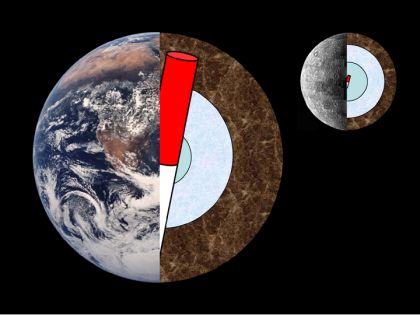
|
Press Release 10/2006
|
 |

|
Press Release 10/2006
|
 |
Press Release 10/2006 - 21st December 2006
Most planets have a magnetic field, like Earth, but with different strength or structure. It shields the planet from the energetic particles of the solar wind. The origin of the magnetic field is explained by a dynamo process, driven by the convective flow of an electrically conducting fluid in the planet’s core. Computer models based on the dynamo theory reproduce the properties of Earth’s magnetic field well, but the weakness of Mercury’s field is a puzzle. Theory predicts that it should have 30% of Earth’s strength, but only 1% has been observed.
Ulrich Christensen of the Max-Planck-Institute for Solar System Research, Katlenburg-Lindau, Germany, presents a new model, in which the outer part of Mercury’s iron core does not convect and a dynamo operates only in its deep part. Computer simulations show that here a strong but fluctuating magnetic field is generated. Similar to the skin effect in high frequency technology, where rapidly varying currents and magnetic fields hardly penetrate to the centre of a wire, only a small fraction of the dynamo-generated field can escape through the stagnant part of the iron core.

|
|
(Image: MPS) |
NASA’s MESSENGER spacecraft, being on its way to Mercury, and the ESA mission Bepi Colombo, planned for the next decade, will test the model predictions for Mercury’s field. If they are confirmed, remaining doubts about the general validity of the dynamo theory for the generation of planetary magnetic fields will be removed.
Christensen, U.R., A deep dynamo generating Mercury’s magnetic field. Nature, Vol. 444, 1056-1068 (December, 21, 2006).
![]() Full article in PDF format (only in German)
Full article in PDF format (only in German)
Prof. Ulrich Christensen
Max Planck Institute for Solar System Research
Max-Planck-Strasse 2
37191 Katlenburg-Lindau
Tel.: 05556-979-542
Fax: 05556-979-219
Email: christensen@mps.mpg.de
| © 2006, Max Planck Institute for Solar System Research, Lindau |
Webmaster 21-12-2006 |